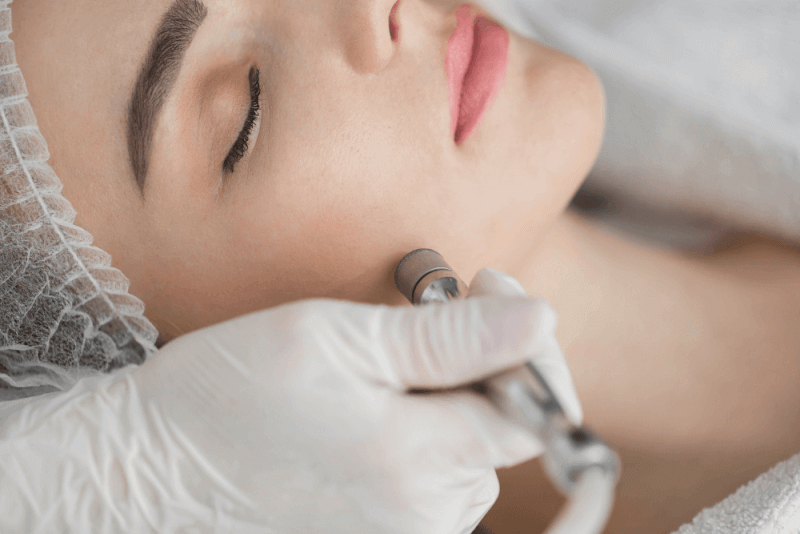30-Second Summary
- Most of the tumors in the nail bed are benign.
- The cause of nail tumors is not exactly known. However, experts indicate that it is more likely to occur in older adults with darker skin.
- The most common symptom of a nail tumor is a colorless line that appears on the nail, typically brown or black in color and vertical.
- In the past, amputation was the first method of treatment. However, today it is only used as a last resort. The primary treatment option now is the surgical removal of the nail. Like other types of cancer, nail tumors can spread to other tissues.
What is a Nail Tumor?
Nail tumors refer to lesions under the nail plate. They are associated with the nail bed or matrix. A significant portion of these tumor growths in the nail bed are benign.
Benign Nail Tumors
Benign or non-cancerous nail tumors are growths that do not cause cancer. Some types of benign nail tumors include:
- Onychomatrixoma
- Myxoid tumors
- Pyogenic granulomas
- Glomus tumors
Malignant Nail Tumors
Subungual melanoma, also known as nail melanoma, is a type of skin cancer under the nail. It typically appears as a dark and vertical line on the nail. Nail tumors are a rare condition, but they are extremely serious. Unlike other types of skin cancer, nail tumors are not linked to sun exposure. The big toe, as well as the thumb or index finger, is more likely to be affected.
Nail cancer originates in the nail matrix, which is part of the nail bed. The matrix extends under the skin and contains blood vessels, nerves, and lymph tissue. Unlike other cancers that start on the skin surface, nail cancer starts in cells called melanocytes, which produce melanin, the pigment responsible for the color of the skin. When these cells become active, melanin production increases, causing a vertical line to appear on the nail.
Many people mistakenly think that changes in nail color are due to trauma or infection. However, since symptoms of nail cancer are not well known, it is often diagnosed later than other types of cancer. Recognizing symptoms early can significantly increase the success rate of treatment.
Malignant nail tumors include:
- Malignant melanoma
- Squamous cell carcinoma
- Bowen's disease
Causes of Nail Tumors
The exact cause of nail tumors is not known. However, experts suggest that it is more common in older adults with darker skin. Unlike most skin cancers, nail tumors are not caused by sun exposure. Trauma or injury is considered a risk factor, along with family history and the presence of moles.
Symptoms of Nail Tumors
The most common symptom of a nail tumor is a colorless line that appears on the nail. This line is usually brown or black and vertical. In some cases, the line may have an irregular shape and may increase both in length and width. Other changes in the nail that could indicate a nail tumor include:
- Separation, cracking, or deformity of the nail
- Irregular pigmentation
- Swelling
- Inflammation
- Lifting of the nail from the nail bed
- Development of an ulcer or nodule
- Bleeding
- Color changes in the skin surrounding the nail
In some cases, there may be no color change in the nail, so it is important to pay attention to any unusual or different appearance in the nail. These changes should be closely monitored, especially if there is no history of trauma or injury to the nail.
Nail tumors can sometimes be mistaken for other nail diseases like infections or bruises. If you notice any changes in the nail or surrounding area, it is important to consult a doctor. If any of the following symptoms occur, seek medical attention promptly:
- Color changes
- Shape changes
- Lifting of the nail
- Changes in the thickness of the nail
- Formation of dents or pits on the nail
Diagnosis of Nail Tumors
In most cases, physical examination is sufficient to diagnose a nail tumor. A family history of nail tumors will also support the diagnosis.
During the examination, a dermoscope may be used to avoid confusion with other nail diseases. This tool, which is a type of microscope, allows for a closer and more detailed view of the area.
Additionally, a biopsy may be needed to confirm the diagnosis. A biopsy will definitively confirm if cancer is present. A small tissue sample is taken for the biopsy using a special tool. Further tests may also be required to check if the cancer has spread to other areas.
Treatment for Nail Tumors
In the past, amputation was the first treatment option. However, today it is only used as a last resort. The primary treatment option now is the surgical removal of the nail. Like other types of cancer, nail tumors can spread to other tissues. Therefore, lymph nodes, which are at the highest risk of spread, may need to be examined. Immunotherapy and radiation therapy may also be applied to increase the chances of successful treatment.
Treatment plans for nail tumors vary depending on the type of tumor. The treatment options for different types of tumors are as follows:
Myxoid Cysts
These fluid-filled cysts are semi-transparent. Draining the fluid inside may be enough for treatment, but there is a chance they may recur. Therefore, surgical methods may be used to completely remove the cysts.
Pyogenic Granulomas
For these tumors, which cause capillary dilation, treatments include electrocoagulation, curettage, or surgical methods.
Glomus Tumors
These small, painful tumors are difficult to diagnose. Surgical methods are used to remove them.
Onychomatrixoma Tumors
Onychomatrixoma, a malignant nail tumor, must be surgically removed as soon as possible, and a biopsy should be performed. Following that, cancer staging may be carried out, and additional cancer treatments may be applied if necessary.
Types of Nail Tumors
Nail tumors, both benign and malignant, are categorized based on the cells they originate from or their characteristics. Types of nail tumors include:
Melanoma
A malignant nail tumor, melanoma begins in melanocytes, the cells that produce melanin. This type of cancer affects not only the nails but also the skin, eyes, and, in rare cases, internal organs. On nails, it typically appears as a dark stripe. The thumb and big toe are most commonly affected. The tumor develops in the nail matrix.
Keratinocyte Tumors
These tumors, which begin in skin appendages and the epidermis, are classified into benign, premalignant, and heterogeneous neoplasms.
Myxoid Cysts
Known as pseudocysts, these cysts are not enclosed by a capsule. The cyst originates from the connective tissue in the last finger segment. It appears as a bright papule on the edge of the nail. It is semi-transparent and may turn red when the fluid inside is released.
Pyogenic Granulomas
This type of nail tumor, caused by capillary dilation, appears as a slightly raised swelling. It causes swelling in the surrounding tissue. These tumors are usually painless but tend to bleed easily. While they can occur in anyone, they tend to disappear on their own.
Glomus Tumors
These tumors, often located under the nail, are more of a vascular malformation than a skin tumor. Though generally benign, their small size makes them difficult to diagnose.
Onychocytic Matrikoma
This type of tumor, which is a form of the nail matrix, typically appears as a dark color under the nail. It causes localized thickening of the nail plate, resulting from excessive keratin production.
Squamous Cell Carcinoma
Squamous cell carcinoma, caused by uncontrolled growth of squamous cells, affects the epidermis. The main cause of this disease is excessive exposure to UV light. Men are twice as likely to develop this disease compared to women.
Bowen's Disease
This type of tumor is generally confined to the epidermis layer and rarely spreads to deeper layers of the skin.
Complications of Nail Tumors
Benign nail tumors typically do not cause complications beyond deformity of the nail shape. However, malignant nail tumors can spread to other tissues, which may pose a serious threat to the patient’s life.
Risk Factors for Nail Tumors
Two main factors increase the risk of nail tumors:
- Excessive UV exposure
- Family history of nail tumors
How to Prevent Nail Tumors?
There is no known prevention method for most types of nail tumors. Therefore, the best preventive measure for malignant types is early detection and starting treatment as soon as possible.







